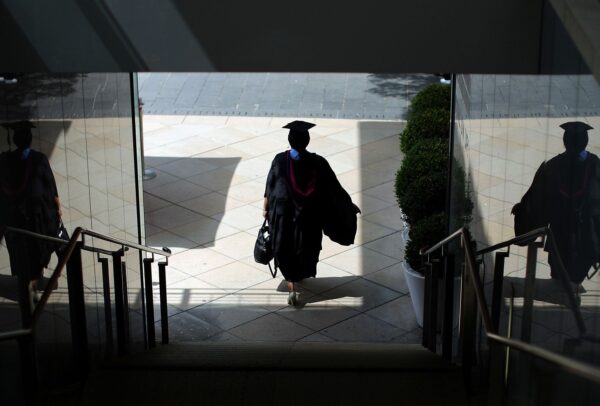By Mackenzie Hawkins and Ella Ceron
For borrowers banking on student debt forgiveness, 2022 started with hope and ended with uncertainty. This year is expected to provide some clarity.
After President Joe Biden announced his sweeping debt relief package, more than half of eligible borrowers applied for forgiveness of up to $20,000 before the Department of Education was forced to halt the process amid a wave of legal challenges.

Biden’s plan is now headed for a showdown at the Supreme Court, which is expected to rule on the its legality by June. In the meantime, a pandemic-era pause in payments has been extended yet again, with a significant share of Americans’ $1.8 trillion federal student debt burden hanging in the balance.
Here are the key dates borrowers should mark on their calendars for 2023:
Feb. 28: Supreme Court Oral Arguments
The Supreme Court has agreed to fast-track its review of two challenges to Biden’s plan: one from six Republican-led states that say the president lacked authority to issue the sweeping program, and a second from two borrowers who contend they are being unfairly excluded from the full scope of the plan.
The justices said they will hear back-to-back oral arguments on Feb. 28.
First Half of 2023: Fresh Start
The approximately 7.5 million borrowers who have defaulted on their loans regained some benefits — including access to federal student aid, ongoing relief from collections and eligibility for other government loans — through the Fresh Start program, which will continue for one year after the pandemic payment pause ends.
To keep those benefits, and gain access to forbearance, income-driven repayment and forgiveness programs, borrowers will be given an opportunity to get out of default in the coming months. The Department of Education is already reporting defaulted loans as “current” to credit agencies, according to a spokesperson, which triggers that process.
For now, borrowers just need to make sure their contact information is up to date with their loan servicers so that they receive communications about the program, which requires borrowers to act within one year of the end of the payment pause.
The Department of Education has indicated that borrowers can use Fresh Start to get out of default by this coming summer.
May 1: Consolidation Deadline
Borrowers with privately held loans through programs including Federal Family Education Loan (FFEL), Perkins or Health Education Assistance Loan (HEAL) should apply for consolidation by May 1 to receive the full benefits of a one-time adjustment to income-driven repayment and public-service loan forgiveness accounts. That adjustment will happen for most borrowers in July.
By June: Supreme Court Decision
The Supreme Court is expected to produce a definitive ruling on the relief plan by June.
June 30: Payment-Pause Benchmark
The Biden administration recently extended the pandemic-era pause in student loan repayments, first implemented in March 2020, for an eighth time. The new deadline for payments to resume is 60 days after one of two dates: June 30, or whenever litigation is resolved, whichever comes first.
Spring and Summer: Account Adjustment
To address past payments that were erroneously left uncounted, the Department of Education is conducting a one-time adjustment to eligible accounts under income-driven repayment (IDR) or public service loan forgiveness (PSLF) plans. Borrowers who have reached 240 or 300 months’ worth of payments for IDR forgiveness, as applicable, or 120 months of payments for public service loan forgiveness, will see their loans forgiven in spring 2023, the Department of Education has said.
Some borrowers close to reaching the 120 months who have applied for PSLF have already had their accounts adjusted, according to a spokesperson. All other borrowers will see their accounts update in summer 2023.
July 1: New Rules Go Into Effect
New rules to improve targeted debt-relief programs are scheduled to go into effect July 1. A full list of the changes is available here and here.
Dec. 31: Forgiveness Application Deadline
Assuming the one-time debt relief program withstands legal challenges, borrowers have until the end of the year to submit their applications. More than 26 million people already have, and the Department of Education is keeping their information on hold — including that of some 16 million borrowers whose applications have already been approved — so that their debt can be discharged as soon as legally allowed.
Keep an Eye On: Income-Driven Repayment
There are currently 8.4 million people enrolled in income-driven repayment plans, which allow borrowers to have their debt forgiven after several years of qualifying payments.
The Department of Education has proposed a series of reforms that would make it easier for these borrowers to obtain forgiveness. However, it has yet to publish the draft rule that would kick off the implementation process, meaning it’s unclear if or when those changes will take effect.
“We look forward to proposing the regulation soon,” a Department of Education spokesperson said in an emailed statement.
Under the proposal as it currently stands, qualifying undergraduate borrowers would pay no more than 5% of their discretionary income toward their loans each month, down from the current 10% cap. There would also be a higher threshold for what counts as discretionary income.
If borrowers make payments each month — or if borrowers qualify for a $0 monthly payment — the government would also cover unpaid monthly interest so the overall balance won’t grow.
Undergraduate borrowers who enroll in these plans could have the remainder of their debt forgiven after 10 years if their original loan balance was $12,000 or less.
More stories like this are available on bloomberg.com




